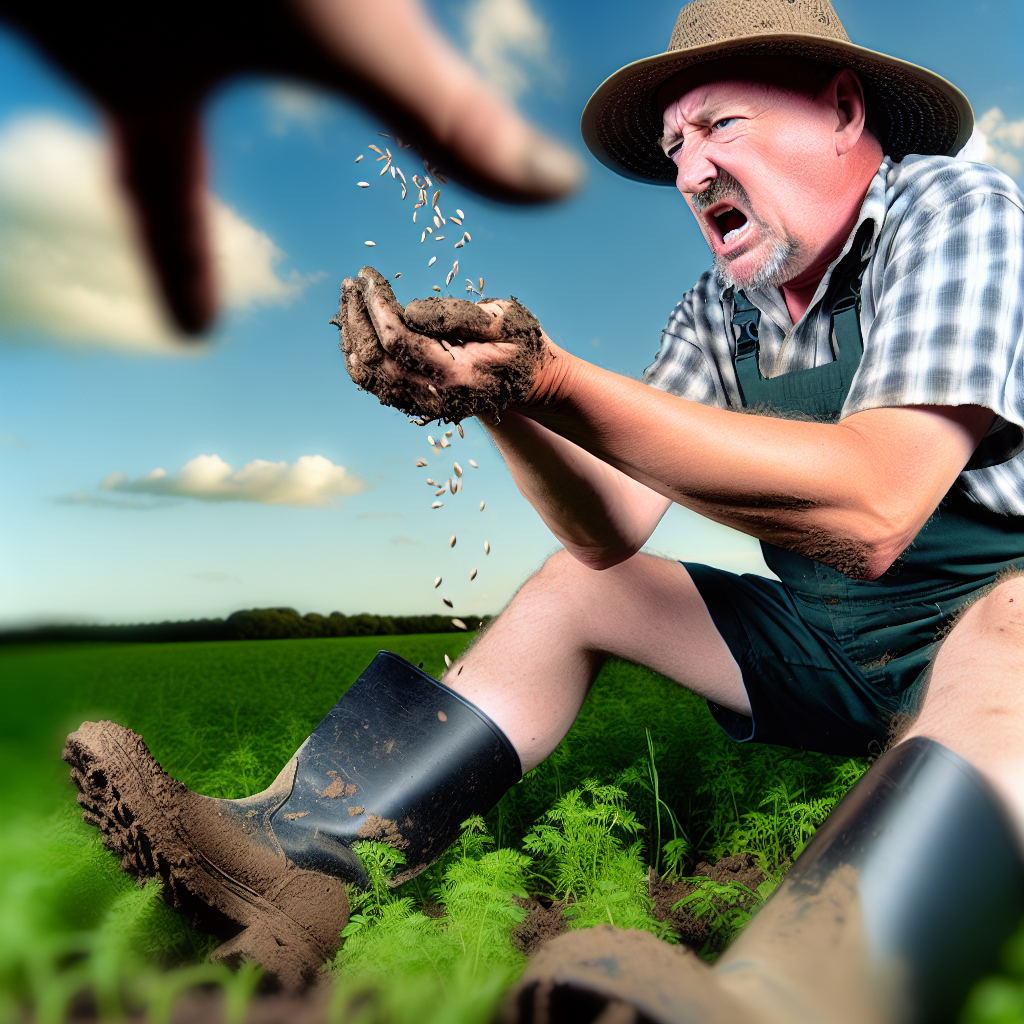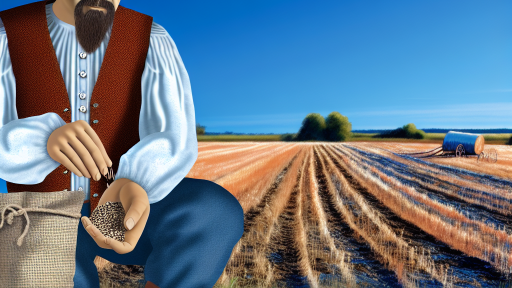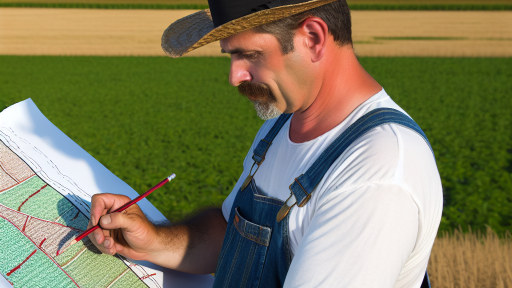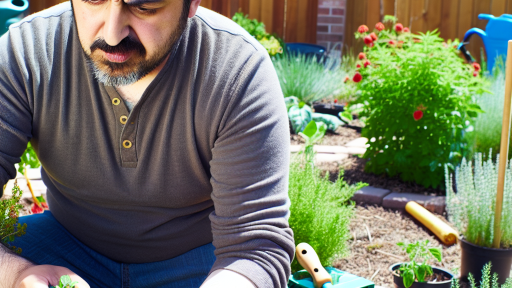Introduction to Organic Seed Saving
Organic seed saving is a vital practice for farmers.
It promotes biodiversity and helps preserve plant varieties.
Farmers can enhance their self-sufficiency through this method.
Additionally, saving seeds reduces dependence on commercial seed suppliers.
This often leads to cost savings over time.
Moreover, it enables farmers to select seeds that are best suited to their specific conditions.
Importance of Organic Seed Saving
The importance of organic seed saving cannot be overstated.
This practice helps maintain genetic diversity among crops.
Farmers can adapt varieties that thrive in local climates.
Furthermore, it encourages sustainable farming practices.
By saving seeds, farmers contribute to a more resilient agricultural system.
Benefits of Organic Seed Saving
Organic seed saving offers numerous benefits.
- It increases resilience against pests and diseases.
- Farmers can develop crops that require fewer inputs.
- It fosters a deeper connection between farmers and their crops.
- Seed saving preserves the cultural heritage linked to specific seed varieties.
Ultimately, these benefits contribute to a more sustainable farming future.
Selecting the Right Seeds for Saving: Heirloom vs Hybrid
Understanding Heirloom Seeds
Heirloom seeds come from plants that have been cultivated for generations.
These seeds are open-pollinated and retain their characteristics over time.
Transform Your Agribusiness
Unlock your farm's potential with expert advice tailored to your needs. Get actionable steps that drive real results.
Get StartedFarmers highly value heirloom seeds for their rich flavors and unique varieties.
Additionally, they promote genetic diversity within crops.
Benefits of Heirloom Seeds
Heirloom seeds can adapt well to local growing conditions.
They often resist pests and diseases due to their genetic diversity.
Furthermore, heirloom plants can generate seeds that are true to type.
This means farmers can save seeds and replant them year after year.
Understanding Hybrid Seeds
Hybrid seeds result from crossbreeding different plant varieties.
Farmers breed hybrids to produce desired traits, such as high yield or disease resistance.
While hybrid seeds may offer consistent results, they’re not true to type.
This means saved seeds from hybrids may not produce the same quality plants.
Pros and Cons of Hybrid Seeds
Hybrid seeds generally produce higher yields and faster growth.
They can provide reliable performance in various conditions.
However, costs can be higher, requiring farmers to buy seeds each year.
This practice may not prove sustainable for all farmers.
Making Your Choice
Choosing between heirloom and hybrid seeds depends on your farming goals.
If you value sustainability and biodiversity, heirlooms may be ideal.
On the other hand, hybrids could better suit your need for high production.
Your decision should reflect personal philosophy and practical needs.
Consider your local climate and soil conditions in making this choice.
Techniques for Harvesting Seeds
Understanding Timing for Seed Harvesting
Harvesting seeds at the right time is crucial for quality.
Seeds mature at different rates depending on the plant species.
Observe your plants closely as they approach maturity.
Look for visual indicators such as color changes.
For example, dry seed pods often signal readiness for harvest.
Showcase Your Farming Business
Publish your professional farming services profile on our blog for a one-time fee of $200 and reach a dedicated audience of farmers and agribusiness owners.
Publish Your ProfileAdditionally, soil moisture levels can affect seed development.
Check the moisture content before planning your harvest.
Methods for Effective Seed Collection
Employing proper methods ensures higher seed viability.
First, use clean and sharp tools to avoid plant damage.
You might choose hand harvesting for smaller plots.
In contrast, larger fields may benefit from mechanical tools.
Always collect seeds during dry weather to prevent mold.
Place harvested seeds in clean containers for storage.
Post-Harvest Processing Techniques
After collection, processing seeds is essential for quality.
Remove any plant debris immediately to avoid spoilage.
Next, dry your seeds to reduce moisture content.
Spread seeds in a single layer for even drying.
Once dry, consider conducting a germination test.
This test will help determine seed viability before storage.
Storage Best Practices
Proper storage extends seed longevity significantly.
Use airtight containers to keep moisture at bay.
Opt for a cool, dark location to store your seeds.
Label each container with the plant type and harvest date.
Additionally, monitor storage conditions periodically.
Correctly stored seeds can remain viable for years.
See Related Content: Best Edible Plants for Sustainable Farming
Cleaning and Processing Seeds: Best Practices for Quality
Importance of Clean Seeds
Clean seeds are essential for successful cropping.
They prevent diseases and pests from spreading.
Additionally, clean seeds enhance germination rates.
Steps for Cleaning Seeds
Start by harvesting seeds at the right time.
Ensure seed maturity to maximize quality.
Next, remove any debris or plant material.
Use a mesh screen or sieve to separate seeds.
After that, rinse seeds with clean water.
Dry seeds thoroughly in a shaded area.
Finally, store cleaned seeds in a cool, dry place.
Seed Processing Techniques
Different techniques can enhance seed quality.
Consider gravity separation for larger seeds.
This method efficiently removes lighter seeds and impurities.
Another option is using a seed cleaner machine.
Manual vs. Mechanical Methods
Manual methods require time but yield good results.
Conversely, mechanical methods save effort and time.
Evaluate your needs to choose the best option.
Storage of Seeds
Proper storage is crucial for seed longevity.
Use airtight containers to protect seeds from moisture.
Showcase Your Farming Business
Publish your professional farming services profile on our blog for a one-time fee of $200 and reach a dedicated audience of farmers and agribusiness owners.
Publish Your ProfileLabel containers with the seed variety and date.
Store seeds in a cool, dark place for optimal conditions.
Regularly check stored seeds for signs of decay.
Best Practices for Quality Seed Production
Maintain biodiversity in seed selection.
This practice promotes healthy ecosystems.
Rotate your crops to mitigate soil depletion.
Follow organic certification standards for quality assurance.
Discover More: Beginner’s Guide to Mushroom Farming on Small Farms
Storing Saved Seeds: Conditions and Containers for Longevity
Understanding Seed Storage Conditions
Seed storage conditions significantly impact seed longevity.
First, maintain a cool and dry environment for seed preservation.
A temperature range of 32°F to 41°F works best.
Humidity levels should remain below 50% to prevent mold.
Regularly monitor environmental conditions for optimal results.
Selecting Appropriate Containers
The choice of storage containers affects seed viability.
Use airtight containers to protect seeds from moisture.
Glass jars, metal tins, or vacuum-sealed bags are viable options.
Avoid plastic bags since they can trap moisture inside.
Labeling and Organizing Seeds
Proper labeling ensures you can identify saved seeds easily.
Note the seed variety and date of collection on each label.
Organize seeds by type to streamline access during planting.
Consider using a dedicated storage box to keep everything tidy.
Regularly Checking Seed Viability
Regular checks help you maintain seed quality over time.
Perform a germination test before planting saved seeds.
To test, place a few seeds on a damp paper towel.
Monitor them for several days to assess germination rates.
Dispose of any seeds that do not germinate effectively.
Maintaining Records of Seed Storage
Keeping detailed records aids in successful seed saving.
Document each seed variety along with storage conditions.
Include notes on any pest problems or unique characteristics.
These records help you improve your seed saving techniques.
You Might Also Like: Maximizing Crop Yields With Container Gardening

Understanding Seed Viability
The Importance of Seed Viability
Seed viability directly affects crop yield and farming success.
Healthy seeds are essential for sustainable agricultural practices.
Understanding the germination potential can save time and resources.
Testing Seed Viability
Farmers can perform simple tests to assess seed viability.
The float test is a common method for checking seeds.
Place seeds in water to see if they sink or float.
Seeds that sink are typically viable, while those that float may not be.
Additionally, the germination test offers deeper insights.
To conduct this test, place seeds in a moist environment.
Showcase Your Farming Business
Publish your professional farming services profile on our blog for a one-time fee of $200 and reach a dedicated audience of farmers and agribusiness owners.
Publish Your ProfileObserve how many seeds germinate over a specific period.
Ensuring Germination Success
Proper storage conditions enhance seed longevity and viability.
Keep seeds in a cool, dry place to prevent deterioration.
Avoid exposing seeds to direct sunlight or high temperatures.
Regularly check stored seeds for signs of moisture or pests.
Factors Influencing Seed Viability
Several environmental factors affect seed viability.
Humidity levels play a crucial role in seed health.
Excess moisture can lead to mold and spoilage.
Temperature variations also impact germination rates.
Seeds thrive at optimal temperatures while extreme conditions hinder growth.
Best Practices for Saving Seeds
Farmers should prioritize selecting healthy parent plants.
Ensure cross-pollination occurs if necessary for crop types.
Label seeds accurately to keep track of varieties and harvest years.
Regularly review and test saved seeds to ensure viability.
Explore Further: DIY Mushroom Growing Kits for Small-Scale Farmers
Legal Considerations in Seed Saving
Understanding Patents
Patents play a significant role in seed saving practices.
They protect the rights of breeders and companies.
Consequently, farmers must understand what is patented.
This includes specific varieties and techniques.
Additionally, patent rights may limit seed saving options.
Regulations Affecting Seed Saving
Numerous regulations govern seed saving practices.
These regulations can differ by region and country.
Farmers should research relevant laws before saving seeds.
Failure to comply may lead to legal issues.
Understanding the regulations helps protect your farm.
Common Legal Challenges
Farmers may face several legal challenges in seed saving.
For instance, conflicts may arise over patented seeds.
Additionally, misuse of trademarks can occur.
Farmers must avoid using protected names or brands.
Moreover, they should be cautious with hybrid varieties.
Best Practices for Compliance
Farmers can adopt best practices to ensure compliance.
First, always source seeds from reputable suppliers.
Next, maintain records of purchased seeds and their origins.
Moreover, seek legal advice if uncertain about seed use.
Lastly, stay updated on changes in seed laws and regulations.
Building a Seed Bank: Community Sharing and Collaborative Efforts
Introducing the Concept of a Seed Bank
A seed bank is essential for preserving genetic diversity.
It allows farmers to store seeds for future planting.
This practice safeguards heirloom varieties from extinction.
Furthermore, it encourages local food sovereignty and security.
Community Engagement in Seed Banking
Engaging the community is crucial for successful seed banks.
Showcase Your Farming Business
Publish your professional farming services profile on our blog for a one-time fee of $200 and reach a dedicated audience of farmers and agribusiness owners.
Publish Your ProfileFarmers can host workshops to educate others.
These sessions promote awareness about seed saving techniques.
Additionally, local events can help connect growers with shared interests.
Collaborative Seed Sharing
Collaboration amplifies the impact of seed banks.
Farmers can share seeds to diversify crop production.
This practice enhances local biodiversity and resilience.
Moreover, it reduces dependence on commercial seed suppliers.
Creating a Supportive Network
A supportive network strengthens community ties.
Farmers can collaborate with local organizations and schools.
This partnership fosters knowledge exchange and resources.
Consequently, it builds a sense of shared purpose.
Setting Up Your Own Seed Bank
Establishing a personal seed bank is a simple process.
Start by selecting appropriate seeds for your region.
Next, collect and store these seeds in a cool, dry place.
Label each packet clearly for easy identification.
Best Practices for Seed Storage
Proper storage ensures seeds remain viable for planting.
Use airtight containers to protect against moisture.
Store seeds in a dark location to prevent light exposure.
Furthermore, regularly check for signs of pest damage.
Documenting Seed Varieties
Detailed documentation aids in tracking seed varieties.
Maintain records of seed origins, planting dates, and yields.
This information will improve future planting and harvesting.
Ultimately, it contributes to selecting the best-performing varieties.
Encouraging Participation and Growth
Encouraging participation is vital for seed bank success.
Invite local farmers to share their seed stories.
Highlight successful outcomes to inspire others.
Furthermore, consider creating a newsletter to share updates.
Leveraging Social Media
Social media can expand your seed bank’s reach.
Use platforms to connect with fellow seed savers.
Share tips, success stories, and challenges online.
Additionally, promote events and workshops through these channels.
Encouraging Younger Generations
Engaging younger generations is vital for sustainability.
Offer fun, hands-on activities for kids and teens.
These activities can include seed planting and gardening projects.
Such initiatives foster a love for agriculture and nature.
Additional Resources
Maximizing Production in Small-Scale Flower Farming: Tips for …




